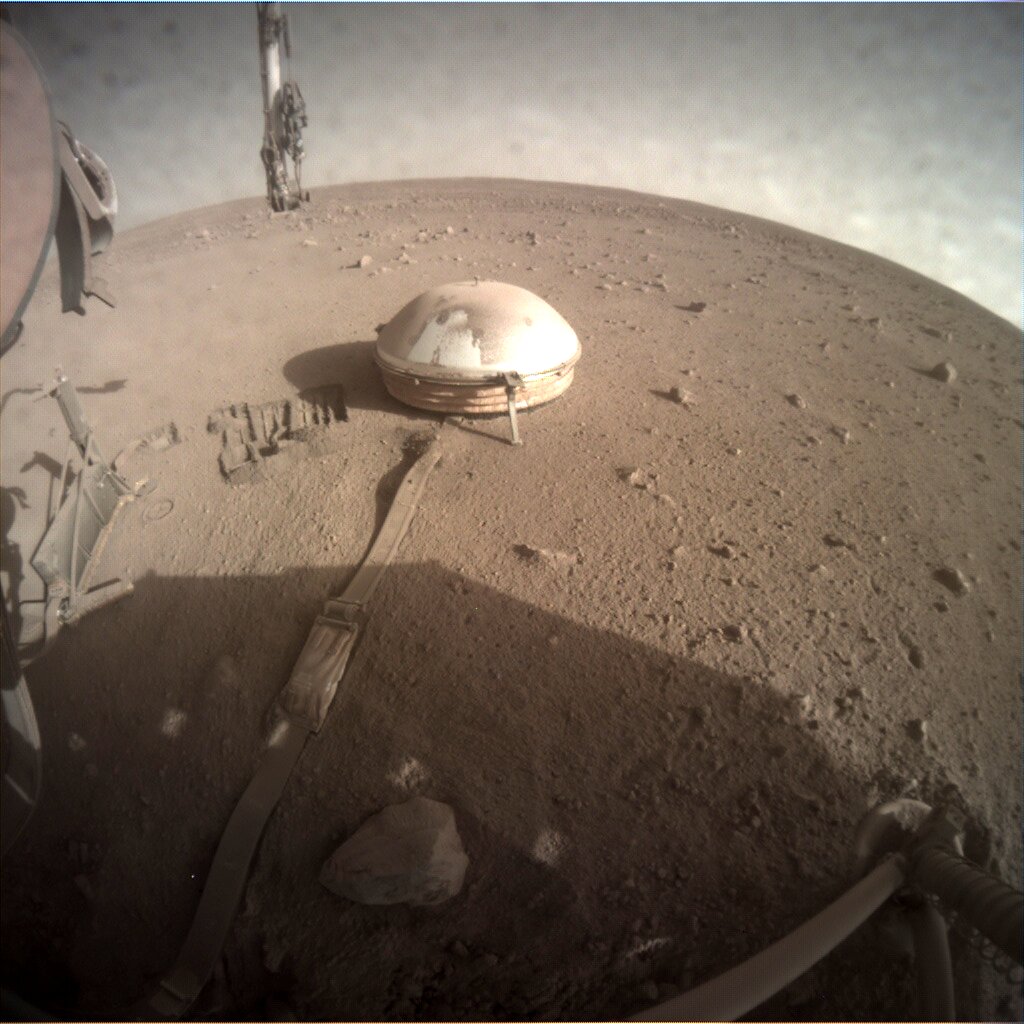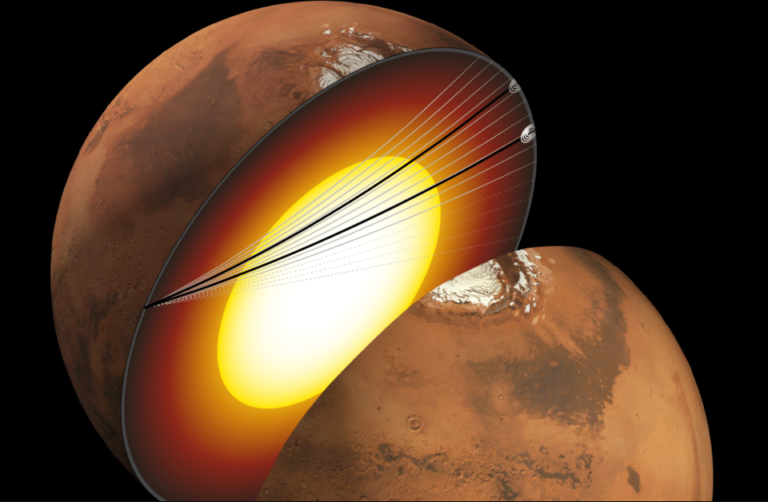For the First Time, Seismic Waves Traveling through Martian Core Detected by Scientists
A team of researchers, including seismologists from the University of Maryland, has utilized seismic data collected by the NASA InSight lander to directly measure properties of Mars’s core. Their findings, published in the Proceedings of the National Academy of Sciences on April 24, 2023, indicate that Mars has a completely liquid iron-alloy core with high levels of sulfur and oxygen. These discoveries provide fresh insights into the formation of Mars and the geological differences between Mars and Earth, which may play a crucial role in supporting planetary habitability. The paper’s second author, UMD Associate Professor of Geology Vedran Lekic, explained that seismic wave observation was first used in 1906 to determine Earth’s core. Over a century later, this technique is being applied to Mars, and with the help of InSight, researchers are uncovering the mysteries of Mars’s center, and what sets it apart from Earth.
The research team tracked the progress of two seismic events on Mars – one from a marsquake and the other from a large impact – to determine the differences between Earth’s core and that of Mars. The waves created by these events traveled through the planet’s core, allowing the team to compare the time they took to traverse the planet compared to waves that remained in the mantle. By combining this information with other seismic and geophysical measurements, the team estimated the density and compressibility of the material the waves passed through. The researchers concluded that Mars probably has a completely liquid core, which is a notable distinction from Earth’s core, which comprises a liquid outer core and a solid inner core.
 The InSight mission’s seismometer, though coated by several years of Martian dust, was able to capture recordings of seismic events from the far side of the planet. NASA’s InSight Mars lander acquired this image of the area in front of the lander using its lander-mounted, Instrument Context Camera (ICC). Credit: NASA/JPL-Caltech
The InSight mission’s seismometer, though coated by several years of Martian dust, was able to capture recordings of seismic events from the far side of the planet. NASA’s InSight Mars lander acquired this image of the area in front of the lander using its lander-mounted, Instrument Context Camera (ICC). Credit: NASA/JPL-Caltech
The team also made inferences about the chemical composition of Mars’s core, revealing a higher-than-anticipated quantity of light elements, specifically sulfur and oxygen, within the innermost layer. According to the researchers’ results, these elements make up about a fifth of the core’s weight. This significant proportion stands in stark contrast to the smaller percentage of light elements in Earth’s core. These differences suggest that the Martian core is less dense and more compressible than Earth’s, indicating that the two planets formed under different conditions.
The core of a planet can reveal much about how it was formed and how it evolved over time, which ultimately determines whether or not it can sustain life. According to UMD Associate Professor of Geology Nicholas Schmerr, understanding the unique properties of a planet’s core is crucial for identifying the presence or absence of life-sustaining conditions. For example, Earth’s magnetic field protects it from solar winds and keeps water in place, but Mars’ lack of a similar protective shield makes it inhospitable to life.
Although Mars does not have a magnetic field at present, scientists believe it may have had one in the past due to the presence of magnetic traces in its crust. The researchers behind this study suggest that this indicates that Mars evolved from a potentially habitable planet into a hostile one. The study also highlights the role of conditions within a planet’s interior and violent impacts in determining its evolution.
The team’s findings support existing models that seek to understand the layers beneath a planet’s surface. The study’s authors, including Jessica Irving of Bristol University, emphasize the importance of this research for future missions to other celestial bodies. Although the InSight mission ended in December 2022, the data it collected will continue to inform our understanding of Mars and other planets for years to come.
Do not forget to share your opinion with us to provide you with the best posts !
[zombify_post]




0 Comments